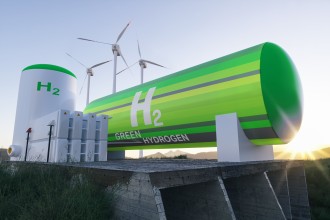I. Introduction
The urgency of addressing environmental challenges has brought the significance of sustainable cities to the forefront. Sustainable cities aim to strike a balance between economic development, social well-being, and environmental protection. In this introduction, we will discuss the significance of sustainable cities in tackling environmental challenges and provide a brief overview of the concept. Our thesis statement sets the stage for exploring innovative solutions and initiatives for creating greener cities.
II. Benefits of Sustainable Cities
Sustainable cities offer a range of benefits that positively impact the environment, society, and the economy. By prioritizing sustainability, cities can achieve the following advantages:
Environmental Benefits: Sustainable cities play a crucial role in reducing emissions and conserving resources. Through measures such as energy-efficient buildings, renewable energy integration, and sustainable transportation systems, these cities contribute to mitigating climate change, improving air quality, and preserving natural resources.
Social Benefits: Sustainable cities foster improved quality of life and healthier communities. They prioritize access to green spaces, promote active transportation modes like walking and cycling, and ensure equitable access to essential services. By prioritizing social inclusion and well-being, sustainable cities enhance residents' health, safety, and overall satisfaction with their living environment.
Economic Benefits: Embracing sustainability can generate significant economic benefits for cities. By adopting energy-efficient practices, cities can reduce energy consumption, leading to cost savings. Moreover, investing in sustainable infrastructure and green technologies creates job opportunities, stimulates economic growth, and attracts sustainable businesses.
In summary, sustainable cities offer a multitude of benefits, including environmental protection, social well-being, and economic prosperity. By adopting innovative approaches and initiatives, cities can harness these benefits and pave the way for a greener future.
III. Urban Planning for Sustainability
In order to achieve sustainable cities, urban planning plays a crucial role in shaping the built environment. This section explores key elements of urban planning for sustainability:
Sustainable Urban Design Principles: Sustainable cities prioritize compact development and mixed land use. By encouraging higher population densities, compact development reduces urban sprawl, conserves land, and promotes efficient use of resources. Mixed land use promotes walkability, reduces transportation demand, and creates vibrant, diverse communities.
Green Infrastructure and Sustainable Transportation Systems: Sustainable cities incorporate green infrastructure, such as parks, green roofs, and urban forests, to enhance biodiversity, improve air quality, and manage stormwater runoff. Additionally, sustainable transportation systems prioritize walking, cycling, and public transit, reducing reliance on private vehicles and minimizing carbon emissions.
Incorporating Renewable Energy Sources in Urban Planning: Sustainable cities integrate renewable energy sources into their urban planning strategies. This includes incorporating solar panels on rooftops, implementing district-level renewable energy projects, and exploring innovative solutions like wind turbines and geothermal systems. By embracing renewable energy, cities can reduce their reliance on fossil fuels and lower greenhouse gas emissions.

IV. Smart Technologies and IoT in Sustainable Cities
The integration of smart technologies and the Internet of Things (IoT) presents immense opportunities for creating sustainable cities. This section delves into the following aspects:
- Role of Technology in Monitoring and Managing Urban Resources: Smart technologies enable real-time monitoring and data collection, facilitating efficient resource management in cities. From smart sensors for air quality monitoring to intelligent waste management systems, technology aids in optimizing resource utilization, improving service delivery, and enhancing overall urban efficiency.
- Smart Grids and Energy-Efficient Systems: Smart grids enable effective management of energy distribution, load balancing, and demand-response mechanisms. By incorporating energy-efficient systems in buildings and implementing smart grid infrastructure, sustainable cities can optimize energy consumption, reduce energy waste, and support the integration of renewable energy sources.
- IoT Applications for Waste Management and Water Conservation: IoT-based solutions can revolutionize waste management by enabling smart waste collection, recycling, and disposal systems. Additionally, IoT sensors and data analytics can enhance water management, detecting leaks, optimizing irrigation, and promoting water conservation practices.
By leveraging smart technologies and IoT, sustainable cities can optimize resource management, enhance energy efficiency, and improve overall urban livability.
V. Innovative Solutions for Sustainable Transportation
Achieving sustainable transportation is crucial for building greener cities. This section explores innovative solutions in sustainable transportation:
Promotion of Public Transit and Non-Motorized Transportation Options: Sustainable cities prioritize the development and enhancement of public transit systems, including buses, trams, and trains. By improving accessibility, affordability, and reliability of public transit, cities can encourage a shift away from private vehicle usage. Additionally, supporting non-motorized transportation options like walking and cycling promotes active lifestyles, reduces traffic congestion, and lowers carbon emissions.
Integration of Electric Vehicles and Charging Infrastructure: Electric vehicles (EVs) offer a cleaner alternative to traditional internal combustion engine vehicles. Sustainable cities encourage the adoption of EVs by establishing a robust charging infrastructure network. By incentivizing EV ownership, installing charging stations, and integrating EVs into public fleets, cities can accelerate the transition to sustainable and zero-emission transportation.
Car-Sharing and Ride-Sharing Initiatives for Reduced Congestion: Car-sharing and ride-sharing services provide alternatives to individual car ownership, reducing the number of vehicles on the road and alleviating traffic congestion. By promoting shared mobility options and implementing supportive policies, cities can optimize transportation efficiency, reduce parking demands, and lower greenhouse gas emissions.
VI. Green Buildings and Energy Efficiency
Green buildings are fundamental to sustainable cities as they minimize environmental impact and enhance energy efficiency. This section explores key aspects of green buildings and energy efficiency:
Green Building Certifications and Sustainable Construction Practices: Sustainable cities prioritize green building certifications such as LEED (Leadership in Energy and Environmental Design) or BREEAM (Building Research Establishment Environmental Assessment Method). These certifications ensure that buildings are designed, constructed, and operated in an environmentally responsible manner, considering factors such as energy efficiency, water conservation, and indoor environmental quality. Sustainable construction practices, including the use of recycled materials and sustainable building techniques, further enhance the environmental performance of buildings.
Energy-Efficient Building Design and Retrofitting: Energy-efficient building design focuses on optimizing insulation, ventilation, lighting, and heating/cooling systems to minimize energy consumption. Sustainable cities encourage the adoption of energy-efficient building codes and standards, promoting the design and construction of energy-conscious structures. Additionally, retrofitting existing buildings with energy-efficient technologies and systems can significantly reduce energy waste and carbon emissions.
Renewable Energy Integration in Buildings: Sustainable cities explore the integration of renewable energy sources, such as solar panels and geothermal systems, in buildings. By harnessing clean energy on-site, buildings can reduce reliance on grid-supplied electricity and contribute to overall carbon footprint reduction. This integration can be achieved through incentives, regulations, and innovative financing mechanisms.
Implementing innovative solutions in sustainable transportation and adopting green building practices and energy efficiency measures are essential steps toward creating greener cities that prioritize environmental stewardship and enhance quality of life for residents.
VII. Community Engagement and Citizen Initiatives
Community engagement plays a crucial role in the success of sustainable city initiatives. This section highlights the importance of involving citizens in shaping greener cities:
Importance of Community Involvement in Sustainable City Initiatives: Sustainable cities recognize the significance of including diverse voices and perspectives in decision-making processes. Engaging citizens fosters a sense of ownership, empowerment, and shared responsibility for sustainable development. By involving residents, communities can collaboratively identify needs, set priorities, and co-create solutions that align with local values and aspirations.
Grassroots Efforts and Citizen-Led Projects for Greener Neighborhoods: Many sustainable city initiatives originate from grassroots efforts and citizen-led projects. From community gardens to urban greening initiatives, these projects contribute to creating greener and more livable neighborhoods. They promote local resilience, strengthen social connections, and address specific sustainability challenges faced by the community.
Collaboration between Government, Businesses, and Residents for Sustainable Development: Collaboration among government entities, businesses, and residents is vital for sustainable development. By fostering partnerships and multi-stakeholder engagement, cities can leverage the expertise, resources, and innovation of various sectors. Collaboration enables the implementation of comprehensive sustainability strategies, encourages private sector sustainability initiatives, and ensures effective governance and policy frameworks.
VIII. Case Studies of Successful Sustainable Cities
Examining case studies of cities leading the way in sustainability provides valuable insights and inspiration for other urban areas. This section presents examples of cities that have made significant progress in sustainable development:
Examples of Cities Leading the Way in Sustainability: Highlighting cities like Copenhagen, Singapore, and Portland, we showcase their innovative approaches to sustainability. These cities have implemented a range of initiatives, including sustainable transportation systems, renewable energy integration, green building practices, and community engagement strategies.
Highlighting Innovative Approaches and Impact on the Environment and Society: By delving into specific projects and policies, we explore how these cities have achieved notable environmental and social outcomes. We examine the positive impact on reducing carbon emissions, improving air quality, enhancing public spaces, promoting social equity, and fostering a sense of community.
These case studies serve as inspiration for other cities striving to become more sustainable. By showcasing successful examples, we can learn from their experiences, replicate effective strategies, and adapt them to local contexts to accelerate the transition towards greener and more sustainable cities.
X. Conclusion
In conclusion, sustainable cities hold immense benefits and play a critical role in addressing environmental challenges, improving quality of life, and fostering economic prosperity. Throughout this blog, we have explored various aspects of creating greener cities, including sustainable transportation, green buildings, community engagement, and successful case studies.
Sustainable cities offer numerous advantages. They reduce emissions, conserve resources, and mitigate climate change. They also create healthier, more livable communities with improved access to green spaces and sustainable transportation options. Furthermore, sustainable cities generate economic benefits through cost savings, job creation, and the attraction of sustainable businesses.
To build sustainable cities, it is essential for individuals, communities, and policymakers to take action. We must support and advocate for initiatives that prioritize sustainability, such as promoting public transit and non-motorized transportation, integrating renewable energy sources, and implementing energy-efficient building practices. Engaging in grassroots efforts and citizen-led projects can also have a significant impact on creating greener neighborhoods.
It is crucial for individuals, communities, and policymakers to collaborate and work together towards sustainable development. By fostering partnerships, sharing knowledge and resources, and aligning interests, we can create a collective impact that drives positive change. Governments, businesses, and residents must collaborate to ensure effective governance, supportive policies, and equitable solutions.
In conclusion, sustainable cities hold the transformative potential to create a more sustainable and livable world. It is our collective responsibility to support and contribute to the greener future of cities. By embracing sustainable practices, engaging in community initiatives, and advocating for sustainable policies, we can pave the way for a brighter and more sustainable future for generations to come. Let us work together to build sustainable cities that harmonize economic prosperity, social well-being, and environmental stewardship.
Quickscout
Looking for suitable
technology providers?
Start scouting!







